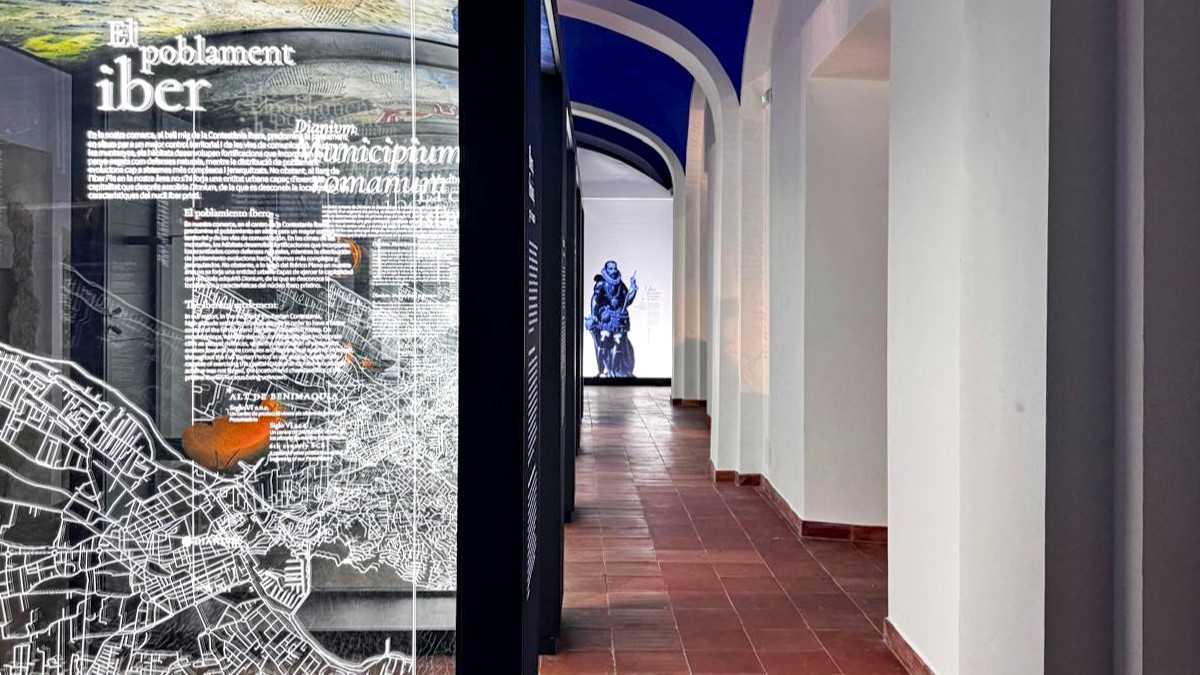DENIA, WATCHTOWER CITY

INTERPRETATION CENTER IN THE CASTLE OF DENIA
Promoter: Denia City Council Date: 2024 Categories: Permanent Exhibition Design, Archaeology
Location: Denia, Alicante Museum design: Rocamora Diseño y Arquitectura
Interpretation Center “Denia, Watchtower City”.
A journey through history from Denia Castle
Located in the emblematic Castle of Denia, the City Interpretation Center opens a window to the urban evolution of the town through the permanent exhibition “Denia, Watchtower City”. This exhibition traces the different historical stages that have defined the territory, closely linked to its connection with the Mediterranean Sea and the cultures with which it has interacted over the centuries.
The project is part of a new museum strategy that transcends the traditional concept of museum, betting on the enhancement of the castle itself and the city that extends at his feet. From this privileged enclave, which visually dominates the urban landscape in all directions, the museography is articulated around the relationship of Denia with its environment and its maritime past.
A renovated heritage site connected to the Mediterranean Sea
Located in the eastern gallery of the Palace of the Duke of Lerma, the center has been restored respecting its historical essence.
- The original rock of the castle is integrated into the exhibition design, reinforcing its authenticity.
- The panoramic windows frame the Mediterranean landscape, visually connecting with the ancient trade routes that linked Denia with Constantinople, Naples and Tunis.
- Sustainable solutions and energy efficiency, guaranteeing the conservation of the space without altering its identity, thanks to the support of Next Generation EU funds.
Museography: a timeline in historical layers
The exhibition is structured in a tour that allows to understand the transformation of Denia throughout five major periods: Iberian, Roman, medieval Islamic, modern and contemporary.
Introduction to the history of Denia
The tour begins with a large backlit textile surface, which synthetically presents the historical stages that form the backbone of the exhibition. This resource allows visitors to place themselves in the city’s timeline before entering the main exhibition.
2. A “mille-feuille of history”: the urban evolution of Denia.
The central axis of the museographic discourse is a succession of temporary arches, which function as a system of superimposed layers showing the evolution of the city.
- Each arch contains a map of the territory, milled on transparent methacrylate.
- From the first arch to the last, the visitor can visualize the urban transformation, perceiving the historical changes at a glance.
- Printed textiles accompany each arch, providing information on the two main thematic axes: the evolution of the territory and maritime trade.
3. Dialogue between land and sea: objects that tell the story.
Each arch incorporates showcases with archaeological pieces, which tell the history of Denia from two perspectives:
- Locally produced objects, found in excavations in the city, reflecting daily life in each period.
- Imported objects, recovered from the sea or from ancient shipwrecks, which evidence the maritime trade and Denia’s connection with the Mediterranean.
This dialogue between life on land and commercial activity at sea shows how trade has been a key factor in the economic, social and urban evolution of Denia since ancient times.
4. Audiovisual room: history comes to life
The tour ends in a projection room, where images and digital resources expand the information and give life to the exhibition narrative. This space allows visitors to delve into the history of Denia through a dynamic and immersive format.
An innovative project for the dissemination of heritage
The Interpretation Center “Denia, Ciudad Vigía” redefines the way of telling the history of the city, combining heritage, sustainability and technology in a unique environment.
This project, developed with the support of Next Generation EU funds, introduces innovative solutions for energy efficiency and sustainable materials, ensuring the preservation of the castle and its adaptation as a museum space without altering its historical identity.
